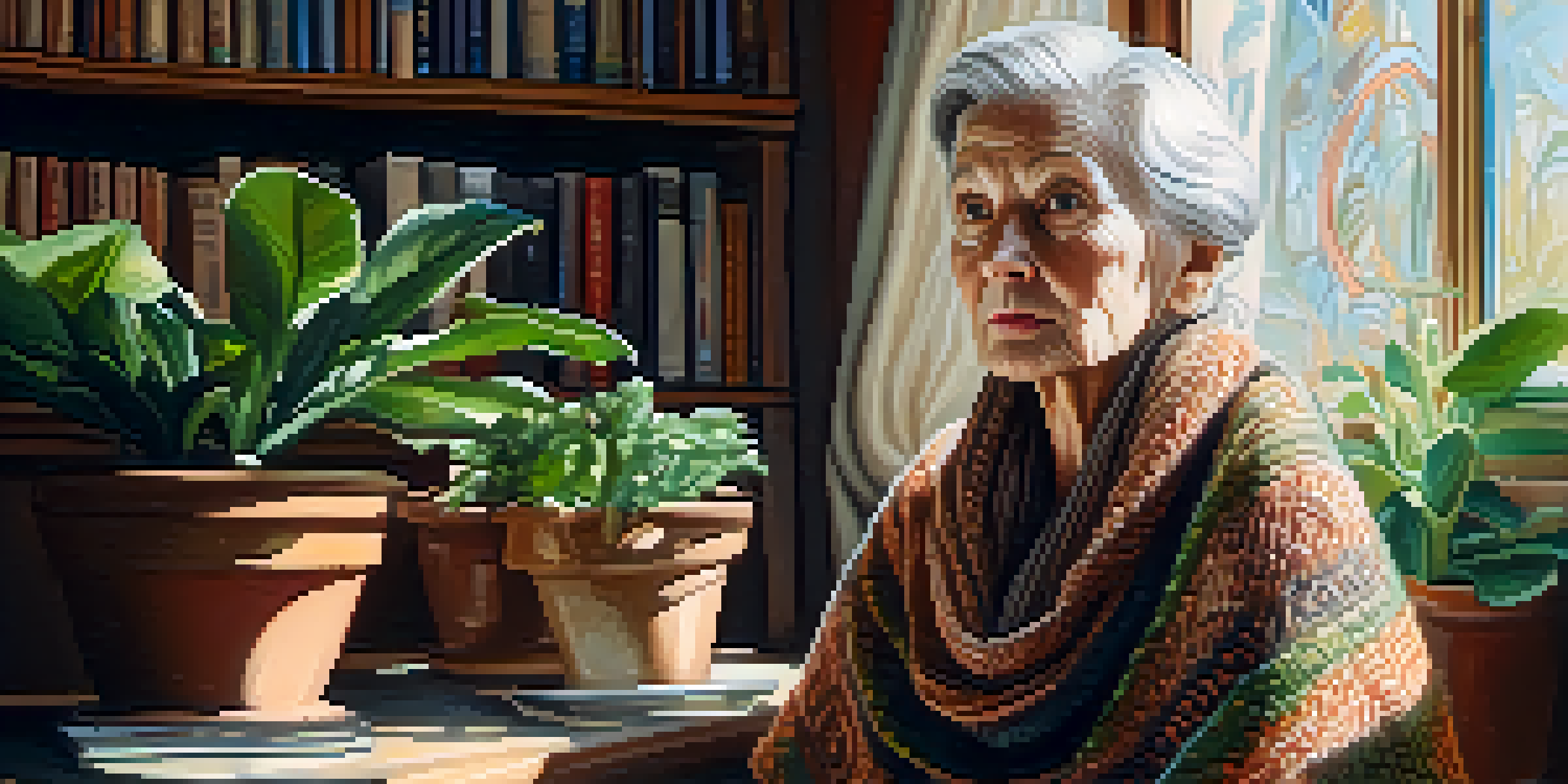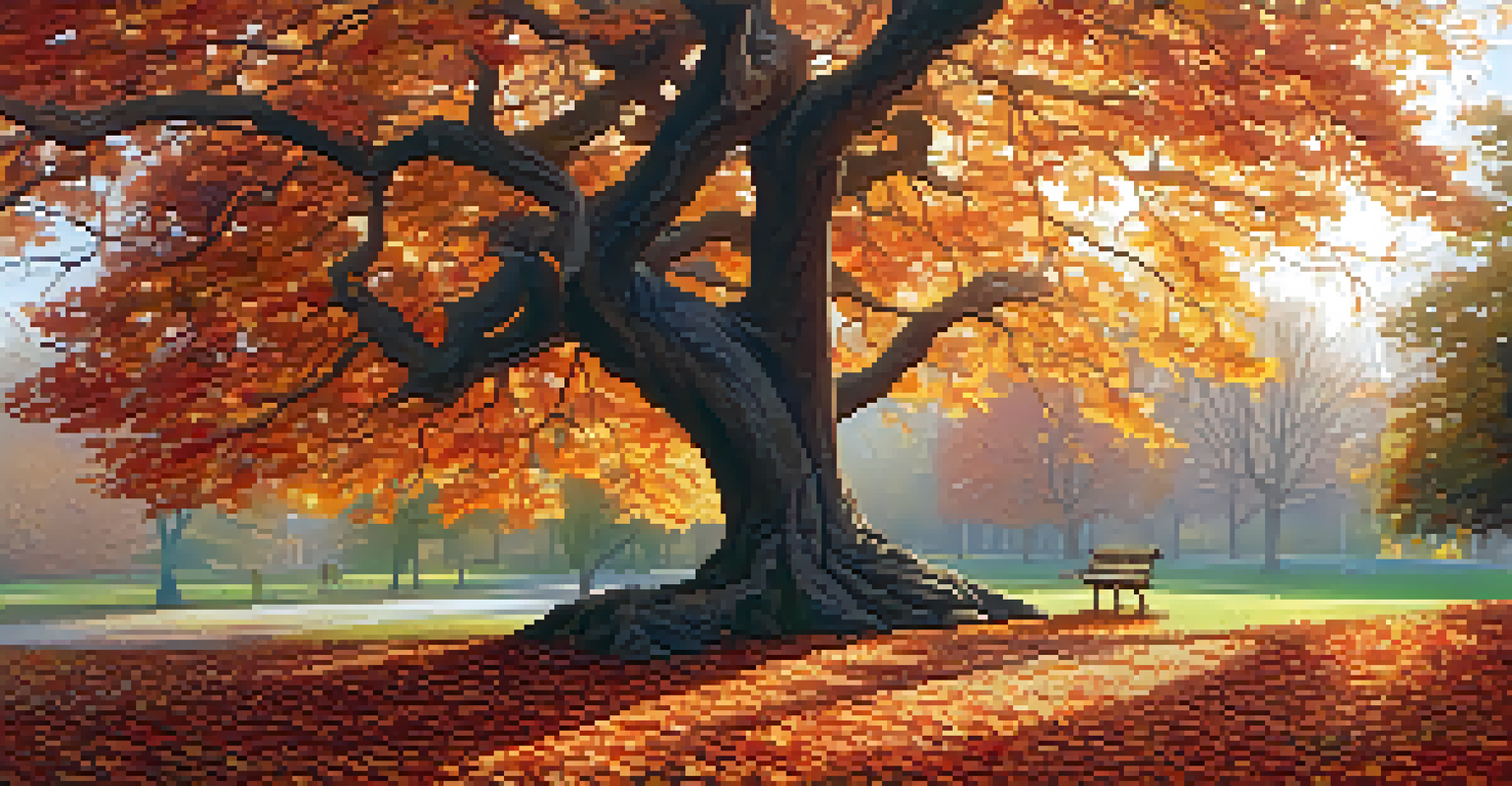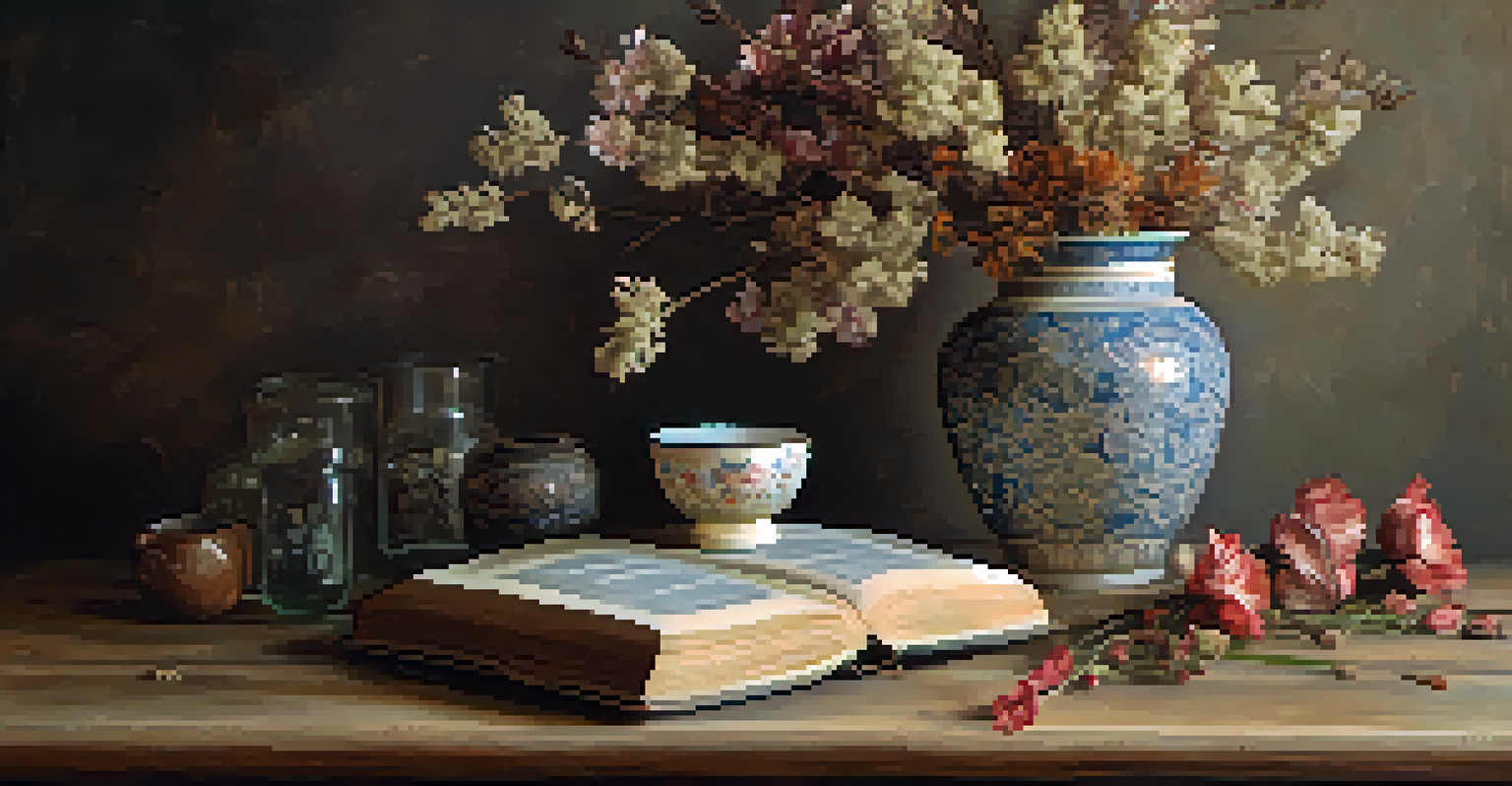The Aesthetic of Aging: Beauty in Imperfection in Art

Understanding the Aesthetic of Aging in Art
The aesthetic of aging in art draws attention to the beauty found in imperfection and the passage of time. Artists often explore themes of decay and transformation, showcasing how aging can add depth and character to their work. This perspective invites viewers to appreciate the narrative behind each wrinkle and flaw, much like the stories etched into the lives of older individuals.
The beauty of a woman is not in the clothes she wears, the figure that she carries, or the way she combs her hair. The beauty of a woman is seen in her eyes, because that is the doorway to her heart—the place where love resides.
For instance, in traditional Japanese art, the concept of 'wabi-sabi' celebrates the beauty of the imperfect and transient. This philosophy encourages an appreciation for the natural cycle of growth and decay, reminding us that beauty is not always about perfection. Instead, it focuses on authenticity and the unique essence of every piece, much like human experience itself.
By embracing the aesthetic of aging, artists challenge societal norms that often equate youth with beauty. This shift in perception allows for a broader understanding of what constitutes art and beauty, making space for narratives that honor the wisdom and experiences that come with age.
Historical Perspectives on Aging in Art
Throughout history, artists have depicted aging in various ways, often reflecting societal attitudes towards the elderly. In Renaissance paintings, older figures were often portrayed with dignity, showcasing their wisdom and status. These representations served to challenge the notion that older individuals were less valuable, instead highlighting their importance within social and familial structures.

As time progressed, the portrayal of aging shifted significantly, especially during the Romantic period. Artists began to romanticize youth, leading to an era where aging was often painted in a more negative light. This change created a disconnect between the beauty of aging and the societal pressures that idolized youth, setting the stage for the modern aesthetic debate.
Aging Celebrated in Artistic Expression
Artists are increasingly embracing the aesthetic of aging, challenging societal norms and inviting viewers to appreciate the beauty in imperfection.
Today, contemporary artists are revisiting these historical narratives, reintroducing aging as a subject worthy of admiration. This revival not only honors the past but also encourages a new dialogue about aging in our current culture, fostering a more inclusive view that embraces all stages of life.
The Role of Imperfection in Artistic Expression
Imperfection plays a crucial role in artistic expression, serving as a reminder of the human experience. The concept of 'flaws' in art often resonates with viewers, as they reflect our own struggles and triumphs. For many artists, incorporating imperfections into their work allows for a more authentic representation of life, resonating with audiences on a deeper emotional level.
Aging is not lost youth but a new stage of opportunity and strength.
Take, for example, the work of contemporary artists like Lucian Freud, whose portraits celebrate the rawness of the human form. His emphasis on texture and the unique characteristics of his subjects invites viewers to appreciate the beauty in their flaws. This approach aligns with the broader understanding that imperfection is not a deficiency but rather an integral part of what makes us human.
By embracing imperfection, artists can create a more honest dialogue about beauty and aging. This conversation encourages society to redefine its standards, recognizing that true beauty often lies within the uniqueness of each individual’s story.
Aging as a Source of Inspiration in Contemporary Art
Contemporary artists are increasingly drawing inspiration from the aging process, using it as a powerful narrative tool. Works that reflect on aging often evoke feelings of nostalgia and contemplation, prompting viewers to engage with their own experiences and relationships. This reflective quality allows art to become a medium for discussing deeper themes related to time and existence.
Artists like Yayoi Kusama incorporate elements of aging into their work, using repetition and pattern to express the passage of time. Her immersive installations encourage viewers to confront their perceptions of self and the collective human experience, reminding us that aging is a shared journey. This approach not only challenges conventional beauty standards but also fosters a sense of community among viewers.
Cultural Perspectives on Aging
Different cultures interpret aging and beauty in unique ways, influencing artistic expression and fostering inclusive narratives.
As the art world continues to evolve, the themes of aging and imperfection will likely remain at the forefront. These narratives not only enrich artistic expression but also inspire new generations to embrace the beauty found in every stage of life.
Cultural Reflections on Aging and Beauty
Different cultures perceive aging and beauty in varied ways, shaping their artistic expressions accordingly. In many Eastern cultures, aging is revered, with older individuals seen as custodians of wisdom and tradition. This respect for the elderly is often reflected in art, where age is celebrated as a symbol of knowledge and experience.
Conversely, Western cultures have historically placed a premium on youth, often sidelining the beauty of aging. Advertisements and media portrayals reinforce this narrative, creating a societal pressure to maintain a youthful appearance. However, as global perspectives shift, there is a growing movement to challenge these norms and celebrate the richness of aging.
Artists from diverse backgrounds are now weaving cultural narratives into their work, prompting conversations about how we view aging. By showcasing the beauty of imperfection, these artists foster a more inclusive understanding of beauty that transcends age, encouraging us to appreciate the diversity of human experience.
The Power of Personal Stories in Art
Personal stories play a pivotal role in how aging is represented in art. Artists often draw from their own experiences, using their work as a means to process and communicate their feelings about aging. This personal connection not only enriches the artwork but also resonates with viewers who may share similar experiences.
For instance, the work of artist Frida Kahlo is deeply rooted in her personal struggles with health and identity. Her self-portraits capture the complexities of aging, pain, and resilience, inviting viewers into her world. By sharing her story, Kahlo creates an intimate connection, allowing others to reflect on their own narratives of aging and beauty.
Personal Stories Enhance Art
The personal experiences of artists enrich their work, creating connections that resonate with viewers' own narratives about aging and beauty.
Through the lens of personal storytelling, art becomes a powerful vehicle for understanding the intricacies of aging. This authenticity fosters empathy and connection, reminding us that behind every piece of art lies a story that deserves to be heard.
Redefining Beauty Standards through Aging
As conversations around aging and beauty evolve, there is a growing movement to redefine beauty standards. Many artists are challenging the societal norms that prioritize youth, instead highlighting the strength and character that comes with age. This shift encourages individuals to embrace their natural beauty, regardless of societal expectations.
Social media platforms have also played a vital role in this movement, allowing artists and influencers to share their authentic narratives. By showcasing the beauty of aging through various mediums, they create a community that celebrates diversity and authenticity. This grassroots approach empowers individuals to reclaim their narratives, fostering a culture of acceptance and appreciation.

Ultimately, by redefining beauty standards, we pave the way for a more inclusive understanding of aging. This movement not only uplifts the voices of artists but also encourages society to embrace the beauty in every wrinkle, every scar, and every story.